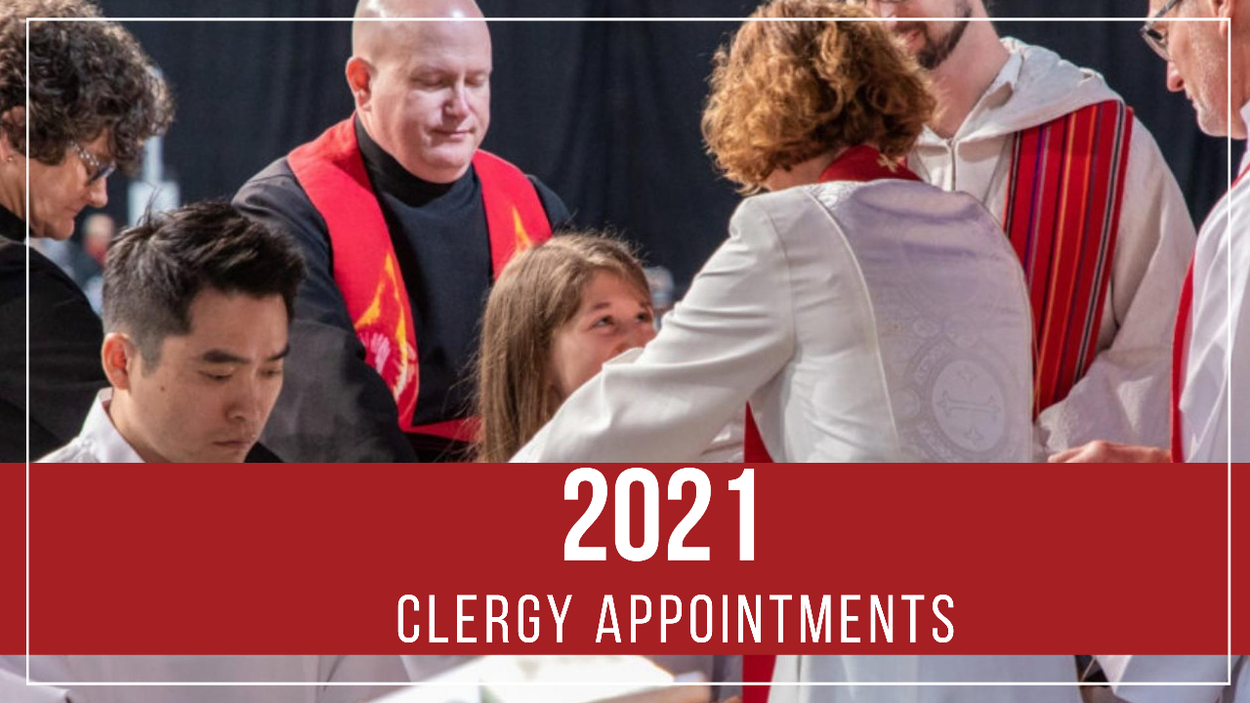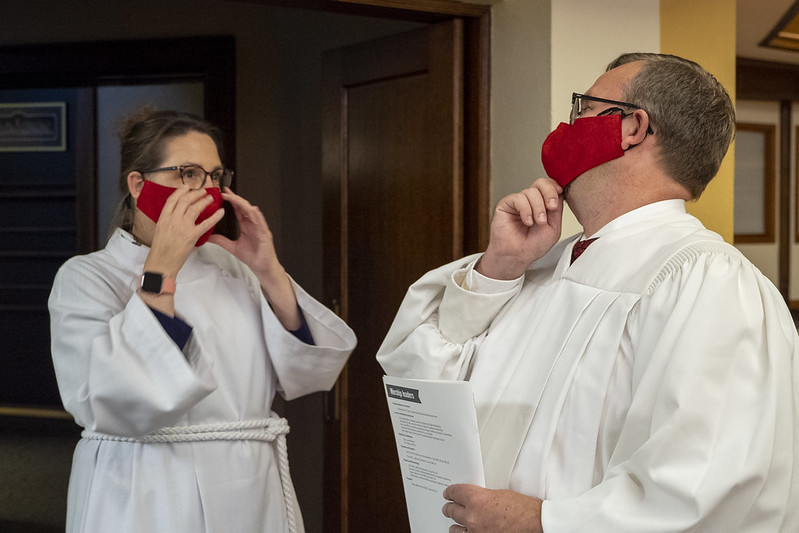
Appointments in The United Methodist Church

We will often make appointments to have our car worked on, or our teeth cleaned, or to meet with someone over an important matter, but the word “appointment” has a special meaning for United Methodists. The word actually comes from the 15th century, meaning, “to put in charge.”
In our United Methodist process of connecting pastors and congregations, the responsibility for putting the right pastor “in charge” in any setting rests with the office of the bishop. The bishop places certain elders in charge of each district, who are known as district superintendents, or “DS.” The superintendents work with the bishop to send pastors to congregations, to serve and lead them. This is a far different process than what other denominations use to match up pastors and parishes. In some denominations, the church itself will “call” a pastor, that is, will select the pastor it wants from a list or roster of available pastors. In those cases, the pastor is hired by the church itself, and is accountable to that church’s oversight. In our UMC system, the pastor is not hired by a church, but instead is a member of the annual conference, and agrees to go where the bishop and Cabinet believe he or she can serve most effectively.
Here are a few qualities or strengths of our system:
- The appointment is based on the missional need of the church, and not in finding someone who fulfills the preferences of the local church leadership.
- Pastors are free to preach the gospel without fear of being “fired,” although they are still accountable to the bishop and district superintendent for their work.
- A change can be made in an appointment, requested by either the pastor or the church, without having to go through some kind of painful fight to remove the pastor, or to get out of a contract.
- Pastors can change appointments without losing their job.
- Pastors may be appointed on the basis of their gifts, skills and experience in ministry, and not based on gender or age or ethnic background.
- Moving costs for pastors are paid through conference apportionments, and not by the local church or the pastor. Some tax rules do intrude on this, but by and large, the conference supplies the move.
Who’s involved in the “appointment”?
The clergyperson agrees to be part of the itinerant system, and to move at the direction of the bishop and superintendents.
The bishop and superintendents oversee the health and effectiveness of the congregation as it is led by any given pastor, and make adjustments and supervision as needed.
The conference Board of Ordained Ministry is responsible for credentialing the pastors, and monitoring their fitness for ministry and intervene when a pastor needs to have a change in his/her status, such as removal from ministry, leaves of absence, or retirement.
The local congregation is part of the “consultation” when a new pastor is to be appointed. The DS works with a Pastor-Parish Relations(PPRC), or Staff-Parish Relations committee(SPRC) to consult as to the needs of the church, hoped-for skills of an incoming pastor, and determining salary and other compensation for the pastor.
Every year, information is gathered from a variety of viewpoints to determine “how things are going” with the pastor and the parish. The pastor is asked to do a self-evaluation in the spring of each year, to identify where growth has occurred, and where growing edges still exist. The PPRC/SPRC of each church also fills out an evaluation of the pastor, and of the church’s ongoing needs. Over the summer and early fall, each DS meets in a one-on-one conversation with each pastor in the district, to talk about the current appointment, or why a change would be needed, and what that change might look like. It is also an opportunity for the DS to fulfill the responsibility of supervision over each pastor. By mid to late fall, both the pastor and the PPRC/SPRC are asked to make input as to whether the appointment should remain the same for another year, or if a move seems to be in the best interest of all parties. This should be based, again, on the missional needs and the effectiveness of the church in reaching new disciples for Jesus Christ!

Rev. Joleen Pietrzak and Rev. Matt Morrison were commissioned as ordained elders September 2020 and have been appointed to serve a congregation. Photos by Dave Stucke.
Next, we pray, and make the best decisions. At a retreat in January, the Cabinet meets to create the big picture of which churches and which pastors “need” a move. That also includes retirements and those pastors newly entering the pool as seminary graduates or newly licensed pastors. A great deal of prayer and time is given to try to fit the pieces together. The work then begins for the district superintendents to contact pastors who will move, and begin the process of introductions of pastors with churches.
We use the image of “chains” in making appointments; that is, as we begin with a church that has a clear opening (due to retirement or such), the superintendent meets with the SPR of the church to confirm the profile of the church, and to fine-tune the church’s needs in a pastor. Very often, the profile fits well with what the Cabinet has estimated to be needed in each church, since it is the superintendent’s role to know the churches and the pastors and their needs. If the profile is a match to what the superintendents believe is the best pastor to serve, the next step is to contact the incoming pastor, and inform him/her of the intention to appoint them to the new charge.
We introduce the new pastor and the new charge. An introduction is set up, and the superintendent, new pastor and SPRC meet as an “introduction,” not an “interview.” The bishop is responsible for each appointment, and unless there would be red flags that arise during the introduction, the pastor introduced becomes the new pastor to be appointed to the new charge at annual conference.
As that appointment is made, a hole is created with the pastor’s intended leaving; a new link in the chain occurs as the process continues of profiling, contacting the pastor, and introducing the pastor in each new church setting.
Yes, on rare occasion, something is missed in the process, and the bishop and cabinet, either by their own determination, or by the request of the pastor or parish, will reconsider the appointment to be made. Sometimes, that means a new pastor is selected, but sometimes, the same pastor is selected to serve.
After each new pastor is introduced, an announcement is made in both charges concerning the change, and the charge and pastor prepare to begin the new ministry relationship. After the appointments are “fixed” at annual conference in June, the new pastors normally begin their appointment July 1.
Appointments and appointment changes are formally made at annual conference time and begin on July 1 of the year. Obvious exceptions include unexpected deaths or other events that remove a pastor from his/her appointment in between annual conferences.